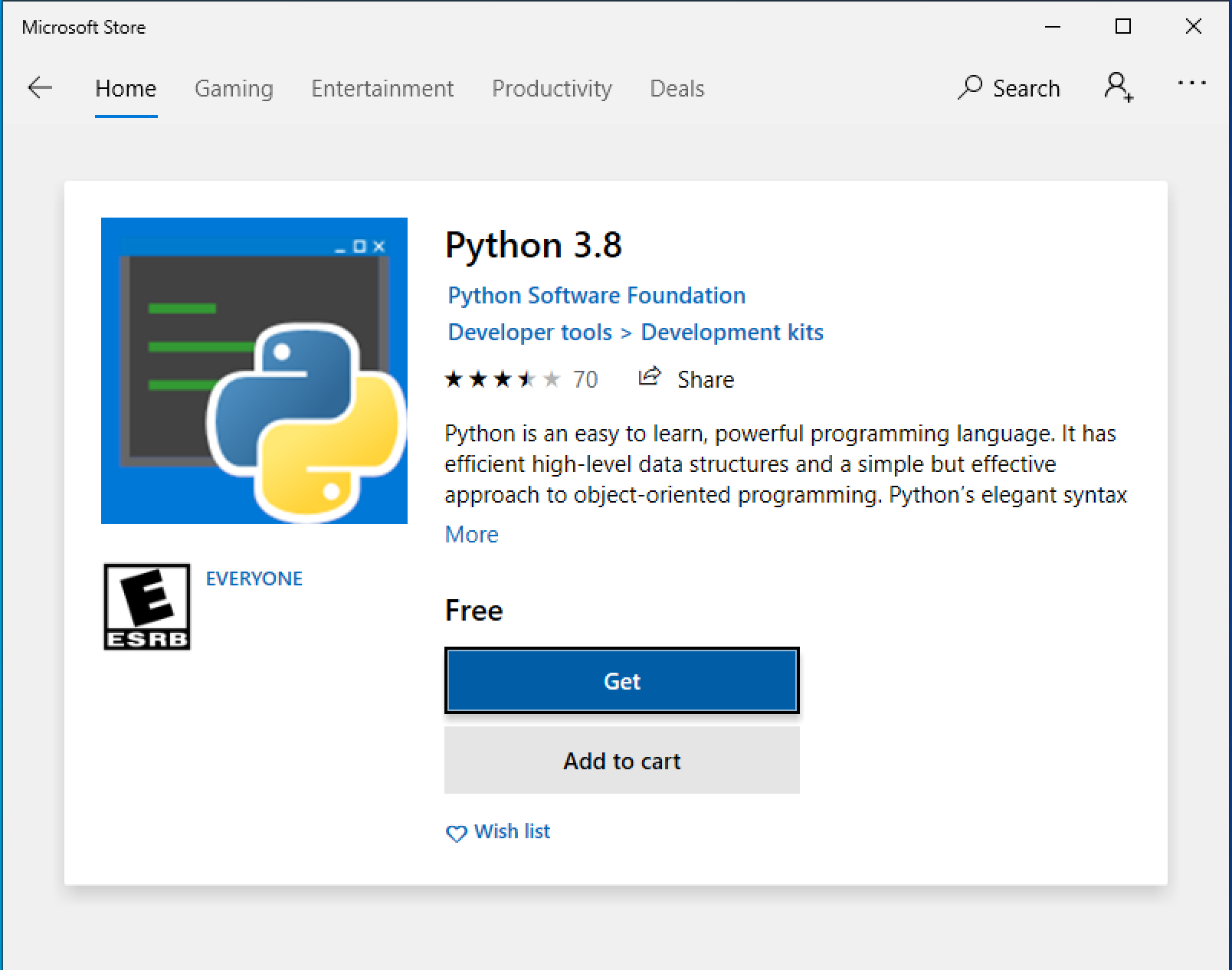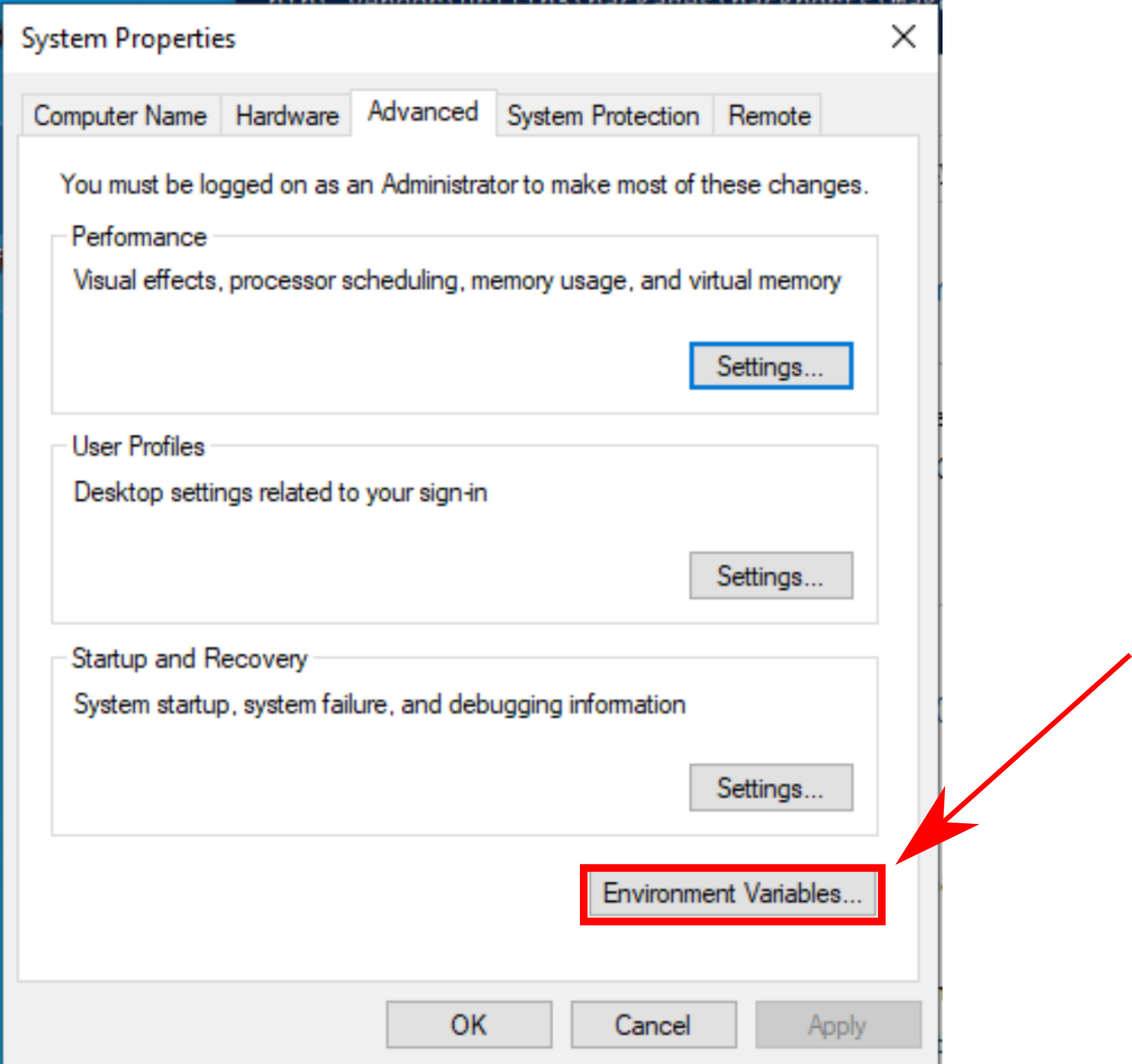Installing Python and Pipenv On Windows
You can either install python from the Microsoft Store or from the python website. It is recommended to install the Microsoft Store as it is better integrated into the system.
Actually Installing Python
Installing from the Microsoft Store
Open up the Microsoft store and use the search to find python. Below is a screenshot of the install for python 3.8. By the way it may ask you to sign after you click “Get” but you don’t actually need to.

Installing from python.org
Simply go to the downloads page and pick the version of python you want.
Checking the install
To see if python is working go to the command line (either Command Prompt or
Powershell) and type in python. If you installed from python.org it may be the
case that ypu have to use python.exe instead of python. Either way, you
should get something that looks like the screenshot below. Type in exit() to
quit.

Setting Your Environment Variables
Background on Pipenv
You can install a bunch of different programs with python. For instance, later on we will be installing a program called Pipenv. Python puts that program into a “Scripts” folder, however, by default windows doesn’t know where that “Scripts” folder is. Windows has an environment variable called “Path” that is a list of folders. When you try to run a program like Pipenv windows will look for a program called “Pipenv” in every folder in the Path variable. So what we need to do is add the “Scripts” folder to the Path variable.
Installing Pipenv and finding the Scripts folder
Unfortunately, the easiest way to find the Scripts folder is to install
something. Note for all the following commands, if pip doesn’t work you may
have to use pip.exe instead.
- Install Pipenv by running the command
pip install pipenv - Run
pip show pipenv. That will print out a bunch of information about the package. - Find the
Locationheading It will be something likeC:\Blah\blah\site-packages. The location is boxed in the screenshot below.

The folder we want is C:\Blah\blah\Scripts. So in the example screenshot above
the scripts folder is
c:\users\me\appdata\local\packages\pythonsoftwarefoundation.python.3.8_qbz5n2kfra8p0\localcache\local-packages\python38\Scripts
Adding the Scripts folder to the Path
- Open the Control Panel
- Navigate to System and Security -> System
- On the left hand side click the option that says “Advanced System Settings”.
- At this point a window should open. It should look like the one below. Click
“Environment Variables”

- Under “User variables for
" select Path (so it's highlighted) then click "Edit" - Add in the path to the scripts folder as a new entry.
- Click OK until you are back at the Control Panel
At this point any new terminals that you open should have the updated Path
Check the path
There are two ways to check. One is to simply type pipenv. If the command runs
then everything is good! If it doesn’t then check that path variable with the
following command: Get-Item -Path Env:Path | Select -ExpandProperty Value.
That command will print out a semi-colon separated list of directories. Your
Scripts folder should be among them.